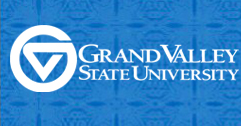Strategic Professional Development Goal Setting for Safe Haven Ministries
Location
Hager-Lubbers Exhibition Hall
Description
PURPOSE: Social change organizations make the most of limited resources, but often overlook developing the talent they already have. This study, using various survey assessments and analytical tools presented in The Talent Development Platform: Putting People First in Social Change Organizations provides Safe Haven Ministries, a local domestic violence shelter and advocacy organization, with a plan for finding and nurturing their internal talent to reduce turnover and improve organizational efficiency. SUBJECTS: 10 employees working in the fall of 2014 (August – December). METHODS AND MATERIALS: Assessments followed up with email correspondence as well as board and staff meeting attendance to discuss results. ANALYSES: The first assessment (Organizational Learning Assessment) was sent in September to all employees in order to assess the learning culture. The second assessment (Individual Professional Development Assessment) was sent in October to a select group of employees to get a more in-depth look at their proficiency level with the social change competencies related to their positions. The third survey (Learning Styles Assessment) was sent in November to the same employees to assess their learning styles and learning format preferences. After collecting data from each of the three assessments, responses were assigned values which were then aggregated to determine an agency-wide average. RESULTS: It was discovered that the organization had position proficiency gaps in the three categories and the report accordingly suggests an agency integration of the following goals: increase organizational financial literacy; improve recruitment strategies to achieve a more diverse and culturally competent staff, board, and group of volunteers; enhance staff members’ engagement with agency’s process of strategic planning and program evaluation. CONCLUSIONS: Under each larger goal, there are three diverse objectives which were crafted according to the various assessments to which the employees responded. In order for Safe Haven Ministries to make the most of its limited resources, this report suggests an implementation of these goals and objectives with special attention paid to changes in its Board of Directors, Leadership Team, and staff.
Strategic Professional Development Goal Setting for Safe Haven Ministries
Hager-Lubbers Exhibition Hall
PURPOSE: Social change organizations make the most of limited resources, but often overlook developing the talent they already have. This study, using various survey assessments and analytical tools presented in The Talent Development Platform: Putting People First in Social Change Organizations provides Safe Haven Ministries, a local domestic violence shelter and advocacy organization, with a plan for finding and nurturing their internal talent to reduce turnover and improve organizational efficiency. SUBJECTS: 10 employees working in the fall of 2014 (August – December). METHODS AND MATERIALS: Assessments followed up with email correspondence as well as board and staff meeting attendance to discuss results. ANALYSES: The first assessment (Organizational Learning Assessment) was sent in September to all employees in order to assess the learning culture. The second assessment (Individual Professional Development Assessment) was sent in October to a select group of employees to get a more in-depth look at their proficiency level with the social change competencies related to their positions. The third survey (Learning Styles Assessment) was sent in November to the same employees to assess their learning styles and learning format preferences. After collecting data from each of the three assessments, responses were assigned values which were then aggregated to determine an agency-wide average. RESULTS: It was discovered that the organization had position proficiency gaps in the three categories and the report accordingly suggests an agency integration of the following goals: increase organizational financial literacy; improve recruitment strategies to achieve a more diverse and culturally competent staff, board, and group of volunteers; enhance staff members’ engagement with agency’s process of strategic planning and program evaluation. CONCLUSIONS: Under each larger goal, there are three diverse objectives which were crafted according to the various assessments to which the employees responded. In order for Safe Haven Ministries to make the most of its limited resources, this report suggests an implementation of these goals and objectives with special attention paid to changes in its Board of Directors, Leadership Team, and staff.
